The Winged Hussars of Poland
An article by Zdzislaw Zygulski, Jr.
 Polish armoured units fighting at the side of the Allies in
World War II wore as a badge a symbolic wing, almost vertical, slightly curved
at the top. This emblem was taken over from an old Polish military tradition:
huge wings made of wood and bird feathers were an emblem of the Polish Hussar
Cavalry, established in the early 16th century, victorious on many battlefields
(especially in the wars against Muscovy, Sweden, Tartary, and Turkey), and
Polish armoured units fighting at the side of the Allies in
World War II wore as a badge a symbolic wing, almost vertical, slightly curved
at the top. This emblem was taken over from an old Polish military tradition:
huge wings made of wood and bird feathers were an emblem of the Polish Hussar
Cavalry, established in the early 16th century, victorious on many battlefields
(especially in the wars against Muscovy, Sweden, Tartary, and Turkey), and
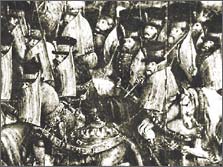
Fig. 1—Hussars in the battle of Orsha, fought on September 8th, 1514, in a painting of about 1520. (National Museum, Warsaw)
|
surviving until about the middle of the 18th century. The hussars were born
anew in the national romantic legends of the 19th and the 20th centuries,
gaining post-mortem a reputation of invincibility. As a matter of fact, like
any other formation in any age and army, they encountered defeats along with
victories, the former particularly when coming up against well-trained
detachments of musketeers. These hussars should not be confused with the hussards, a
light cavalry of purely Hungarian origin, popular in many armies all over the
world (also in Poland) since the 18th century. The formation to which this
article is devoted also derived from Hungary, but on Polish soil, and it was
soon much altered, being a fortunate combination of Eastern and Western
elements with a strong predominance of local traditions and inventions. In its
developed form it was a half-heavy cavalry distinguished by a variety of arms
and armour, very operative, ready to choose the tactics suitable for the
immediate necessity. As a rule the hussars were formed into squadrons of
150-200 horsemen each, and attacked in two lines galloping knee to knee, their
long lances giving a tremendous shock to the enemy. In the melee they fought
with side arms and firearms. By daring charges they proved superior to the
contemporary West-European cavalry, especially over cuirassiers and
carabineers, who were conditioned to a much more static system according to
which each rank in succession discharged its pistols and rode back to a place
behind the squadron to reload. Hussars could also easily break troops of
oriental cavalry because the oriental riders' armament was greatly inferior
and devoid of firearms. Iconographical and written sources of the epoch,
together with a choice of the best original arms, armour, and equipment
preserved in museums, enable us now to present the Polish hussars accurately,
particularly to students outside of Poland.
Early Hussars

Fig. 2—Hungarian hussar shield of about 1520. (State Collection of Art of Wawel Castle, Cracow)
|
Almost till the end of the 15th century, Polish military
forces and weaponry were of Western style, but the constant political and
cultural contacts with the East changed the trend of development. The system
of general levy of noblemen was replaced by the system of enlisting mercenary
troops. Soldiers were recruited at home and abroad. In the wars against the
Grand Duchy of Muscovy and against the Tartar Khanates, the kings of the
Jagiellon dynasty, reigning in United Poland and Lithuania, had to reform their
armies in order to get troops trained for campaigns in vast steppes intersected
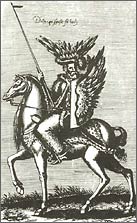
Fig. 3—Turkish deli horseman, after the drawing by Nicolas de Nicolay, circa 1551.
|
by marshy rivers. Heavy horsemen in medieval style, clad in armour from head to
foot, handling thick lances, were practically useless. In this situation,
troops of light cavalry—hussars—formed chiefly in Serbia and Hungary in the
time of Matthias Corvinus and proved excellent in wars against the Turks, were
invited to Poland. In the rolls of the Polish and Lithuanian armies of the
early 16th century, hussars are mentioned many times, being described as
mounted soldiers equipped with thin lances, shields and sabers. The term Racowie,which
means "Serbians", is generally used in these sources, but some
Hungarian names are registered as well. Hussar or gussar originally
meant "a robber" in Serbian. These horsemen served not only under the
Polish and Lithuanian colors but also under those of the Holy Roman Emperor;
images of hussars in Hungarian style may be easily found in the woodcuts
illustrating the deeds of Maximilian I, particularly in the books of Theuerdank and
Weisskunig. Far the best iconographic document of hussar formation in the early 16th
century is to be found in an oil painting (Fig. 1) on wood measuring 162cm. x 232cm.,
datable about 1520, now in the National Museum in Warsaw, depicting the battle of
Orsha.1 In this battle, fought on September 8th, 1514, the allied
forces of Poland and Lithuania won a telling victory over the army of Vassili
III, Grand Duke of Muscovy. With some reservations, the picture is historically
faithful, although the unknown artist was inclined towards exaggeration and
multiplications of forms in his rendition of the arms and armour; he must have
been well acquainted with the works of Albrecht Dürer and Lucas Cranach the
Elder. The Polish-Lithuanian army is shown as consisting of fully-armoured
knights in the old style, of infantry and artillery of light mounted archers,
and of the new hussars. The Muscovite side is formed entirely of the
heavy-armoured boyar cavalry.
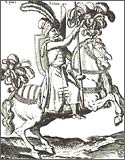
Fig. 4—Polish hussar in an etching by Abraham de Bruyn, about 1587.
|
The Orsha hussars are shown precisely, from various angles:
marching three or four horsemen in a rank, crossing the Dnieper river,
charging, fighting, and in pursuit of the enemy. Lances are their basic
weapons: rather thin, of the same width throughout their length, and bearing
pennons with crosses. At the attack, the lances are held in the position of
"halfway up the horse's ear," rested in the shield notch or free.
The shields are typically Hungarian, made of wood, asymmetrical in a form
sweeping upward to a sharp point at the top on one side, and painted in
bright-colored stripes (but there are also rondaches spiked in the middle). The
sabers are also of Hungarian origin, unfortunately not much depicted in actual
use, for the most part shown sheathed in large scabbards mounted with silvered
or gilded metal. Some hussars, probably of officer rank, have buzdy-gan maces
thrust back under their belts. Horses covered with cloths are led by bridles
with heavy bits; saddles are not visible, but stirrups are shown as almost
circular, each with a small ball underneath. Spurs are very unusual, being
fitted with large metal wings that cover the upper part of the rider's foot (we
do not know any actual example of this kind of spur, but some analogies may be
found in the painting and engravings of Albrecht Dürer). Head coverings are
varied and numerous, one in the shape of a modern top hat apparently made of
black felt being the most frequent; as a rule, it is decorated in the lower
part and over the brim with a gilded circlet and a plume in a metal holder.

Fig. 5—Polish hussar in an etching by Stefano della Bella, about 1645.
|
There are also sugar-loaf caps with a similar plume, Hungarian flat caps with
upright brims, caps with large flaps, and fashionable berets. No armour is worn
by hussars, but short quilted joupanes seem
to offer sufficient protection. There appears sporadically a short mantel with
long sleeves, which may be identified with the national Hungarian article of
costume known as a mente. Some hussar horses, perhaps those of officers, are decorated
with horsehair streamers called buntchuks tied to hang down under
the neck.
Few real specimens of 16th century hussar arms and equipment
have survived. Among such that have, we find a set of Hungarian shields in the
Magyar Nemzeti Múzeum in Budapest and in the State Art Collection at Wawel
Castle in Cracow (Fig. 2). Some of these have a painted emblem of an eagle's
wing, but from iconographical sources it is obvious that they were decorated
originally with real eagles' wings, the custom deriving from Turkey. (Horsemen
of Turkish crack troops, called deli, were distinguished by wings and wild
animal skins. Such a deli is faithfully represented in an album of Turkish
types drawn by Nicolas Nicolay [Fig. 3], who traveled to Istanbul in 1551, and
then published his experiences.2)
Hussars Adopt Armour, Wings and Wild Animal Skins

Fig. 6—A squadron of Polish hussars in the "Stockholmer Roll" about 1605. (Livbrustkammaron, Stockholm)
|
In the first half of the 16th century some squadrons of
hussars took on helmets and armour, probably to allow them to serve in lieu of
the old heavy cavalry that was generally disappearing from the battlefields
because it was outmoded. On military rolls and musters of the time (kept
scrupulously because they were the basis for indemnities for casualties), the
most important pieces of hussar armament were always registered: helmet, mail
armour, shield and lance. Sabers, tucks, javelins, axes, bows and quivers, as
well as various sorts of firearms, become frequent in the second half of the
century. Just after 1550 the skins of leopards, tigers, bears and wolves begin
to be mentioned, but in the absence of these, hussars now wore special types of
killms or mantles thrown over the shoulders. Also from this time stem the
first reports of huge wings made up of eagle, crane or ostrich feathers, the
latter being dyed red, blue or green. In this the custom of the Turkish
deli was surely imitated, but the form of Polish wings was quite original:
feathers were inserted in a row into the appropriate holes drilled into a straight
wooden batten which was painted or covered with crimson velvet and mounted in
brass; by means of special metal rods riveted to the batten, the finished wing was
fixed to the backplate of the man's armour, which was furnished with holders.
Should a hussar be without armour or without backplate, he could fix the wing,
or a pair of wings, in the holders of the cantle of his saddle; this could be
done only after mounting. (Armourless hussars persisted for a long time in the
16th century, and even later [Fig. 4].) A Polish hussar without armour but
with a single tall wing of ostrich feathers is perfectly represented in a fine
etching by Stefano della Bella, who observed Polish knights and soldiers in the
company of Polish embassies to Rome 1633 and Paris 16453 (Fig. 5);
both armoured and armourless hussars were used at that late date, but either
way, wings were of the essence as the characteristic feature of the formation.
Their function and meaning are still not thoroughly explained. It has been
suggested that in battle the rustle of these wings frightened the enemy’s
horses—but surely the rustle of even a thousand must have been lost in the
terrible cacophony of war. An attempt has been made to interpret the wings as
protection against the lassos used by oriental horsemen, especially by the
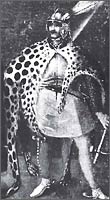
Fig. 7—Polish hussar, early 17th century, in a painting in the National Museum in Poznan.
|
Tartars, but reflection and simple sense rule this thesis out, too. In fact,
the function of the wings was surely and solely the creation of a powerful
psychological impact. The winged knight clad in armour and wild animal skin
must have had the appearance of a superhuman creature, arousing a maelstrom of
emotions in the beholder—panic, respect, hate, and admiration. But since in
actual combat those long, clumsy objects rigidly fixed to the rider's back
could not have been very useful, we must conclude that hussars probably took
the wings into battle only rarely if at all, reserving them rather for parade
and ceremony.
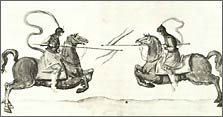
Fig. 8—Hussars jousting: a miniature painting of the early 17th century. (The Archives of Cracow Cathedral)
|
Not long after the middle of the 16th century most of the
hussars were changed into a heavy formation overloaded with equipment and
ornaments. Stephen Batory, Duke of Transylvania, who was elected King of Poland
in 1576, worked a further transformation. He was a man of outstanding military
talent who waged a series of successful wars against Muscovy and planned a
great expedition against the Turks, but died suddenly before this project could
be realized. Batory established a new pattern for the hussar cavalry, making
it much more mobile and meticulously disciplined. He discarded forever what
remained of heavy helmets, wooden shields and large saddles in medieval style,
introducing instead light zischägge helmets
or special iron hats, light half-armour worn over mail shirts or only
supplemented with mail sleeves, and practical hussar saddles and stirrups very
much in oriental style, with spurs with protruding necks. Lances were
shortened; the saber remained the principal sidearm but an additional heavy
saber or pallash—often a long tuck—was tied to the saddle. Holsters in front of
the saddle held two wheellock pistols or a short wheellock carbine. War-hammers
and buzdygan-maces were favorite officers'
weapons. The long pennons of the lances fluttering and flapping during the
charge made a vivid and dreadful picture in the enemy's eyes.
The hussar style after Batory's reforms is fully displayed
in the so-called Stockholmer Roll which
has survived in the Livrustkammaren in Stockholm.4 This is a painted
frieze about 15 meters long and 50 centimeters high representing the
ceremonial entrance of King Sigismund III Wasa and Queen Constance in Cracow in
1605. Besides other military groups, two squadrons of hussars in full gala
dress and armament accompany the royal couple (Fig. 6). These hussars have
light helmets and cuirasses with mail sleeves, single wings of black feathers,
leopard skins or patterned kilims over
the shoulders, lances with long pennons, sabers and pallashes. Their stirrups
are of the Polish variety, deriving from the Tartar-Turkish type. From almost
the same time stems a good portrait of a hussar officer in the National Museum
in Poznan (Fig. 7), and a miniature of a pair of jousting hussars without wings
in the Archives of the Cracow Cathedral (Fig. 8).
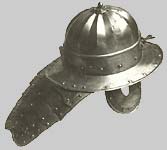
Fig. 9—Hussar iron hat (zischägge), about 1600. (State Collection of Art of Wawel Castle, Cracow)
|

Fig. 10—Hussar officer's zischägge, probably made in Nuremberg, about 1550. (State Collection of Art of Wawel Castle, Cracow)
|
A small number of hussar objects dating from the late 16th
and early 17th centuries may be found in Polish collections. A group of
helmets, without doubt of local production, have been preserved hi the Polish
Army Museum in Warsaw, in the State Collection of Art at Wawel Castle in
Cracow, and in the Castle Armoury at Malbork (Fig. 9). A typical helmet of this
kind had the skull made of two pieces joined down the middle, not differing
from the kettle helmet or the "iron hat" popular in the Middle Ages,5
but fitted with a flat brim and movable nose- ear- and nape-guards. The
ear-guards were pierced in a heart shape. A whole wagon full of such hussar
hats was found in the bed of the Vistula near Warsaw just before World War 1.
In spite of corrosion, the form of these helmets is quite clear; they are very
homogeneous, surely made in the same workshop for a hussar squadron. The
helmets of officers were usually much more elaborate, in this period having
been usually imported from abroad. It must be stressed that throughout the
16th century the hussar fashion was cultivated also in Hungary and in Austria.
Decorated zisch'dgge helmets were produced
largely in South Germany, especially in Nuremberg. In the Armoury of the State Collection
of Art at Wawel Castle in Cracow we find two such helmets, one of them
sumptuously gilded and set with semiprecious stones, ex-property of a
forefather of the Tyszkiewicz family (Fig. 10), datable about 1550, and the
other of Hungarian-Turkish fashion but with characteristic etchings of Renaissance
motifs, dated 1561 and coming from the Radziwill family. A great number of
hussar cuirasses from the late 16th century are preserved in the old Arsenal of
Graz in Austria, but there are also good examples in the museums of Warsaw,
Cracow, and Kornik. Their form derives from the Italian half-armour called anima, constructed
entirely of horizontal lames, and joined together underneath by a system of
rivets and leather straps and popular as early as 1530, particularly in the
naval service. A hussar cuirass of the Hungarian-Austrian style consisted of
breast and backplates completed with a gorget worn beneath them. The examples
in Polish hands are sometimes decorated (but perhaps were not originally) with
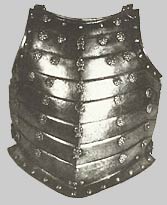
Fig. 11—Hussar breastplate in Hungarian style, late 16th century (Museum of Kómik)
|
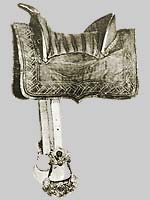
Fig. 12—Polish hussar saddle, about 1600. (Livrustkammaren, Stockholm)
|
brass rosettes or small "vases" (Fig. 11). Mail shirts or mail sleeves worn with
these plate cuirasses were composed of riveted iron rings. (Since chainmail
manufacturing techniques changed slowly, it is impossible to tell objects of the late 16th
century from those made up to a hundred years later.)
Polish hussar saddles of oriental type but of local
production are deep; to give a proper support to the rider's back, especially
at the moment of a lance attack. Usually they are covered with embroidered leather
or velvet, their bow being mounted in brass or silver while the stirrups,
generally called the "Polish variety," are in fact strongly
influenced by Tartar-Turkish styles. The best examples of these are now in the
Livrustkammaren of Stockholm and in the Orusheynaya Palata of the Kremlin in
Moscow (Fig. 12). In the Czartoryski Collection of the National Museum in
Cracow we find several interesting hussar spurs of tinned iron with brass
inlays, characteristic in their extremely long necks with stars. Poland has
fairly rich collections of Hungarian-Polish sabers of
the late 16th and early 17th centuries, used by the hussar cavalrymen as well
as by the infantrymen (Fig. 13) (cavalry sabers always have longer blades,
reaching about 80-85 cm.). The blades for these sabers were manufactured in
Hungary and in Poland, though the best came from Styria and Italy, particularly
from Genoa. They are rather large, and most have several fullers and
outstanding yelmens; their hilts have long iron quillons, and the grips are covered
with black leather (as are the scabbards, which are mounted with iron or brass
furniture sometimes pierced with heart motifs, apparently a favorite among the
hussars).
Highlights of Polish Hussar Cavalry
The Golden Age lasted from about 1630 until the middle of
the 18th century.6 In numerous battles of the 17th century hussars
played a decisive role in the victory, as for instance at Vienna in 1683.
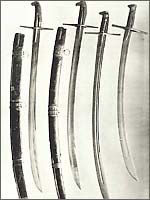
Fig. 13—Sabers of Hungarian-Polish style, about 1600. (National Museum, Cracow)
|
In the reign of the King Ladislav IV (1632-1648), whose
military reforms were of the greatest importance, the national type of hussar
armour was adopted. It was a splendid creation of Polish design and
craftsmanship (Figs. 14, 15, 16). Uniform in shape and decoration, it consisted
of a zischägge, breast- and backplates
(or sometimes of a breastplate alone), a pair of pauldrons and a pair of
arm-guards. Very rarely, long tassets made of lames were attached to the
breastplate. The hemispherical skull of the zischägge had
a beak fixed by rivets through which passed an adjustable nose-guard, leaf-shaped
over the nose and secured by a butterfly nut; the ear-guards were movable,
being riveted to leather suspensories, and often pierced in heart forms, while
a lobster-tail neck-guard of several lames was riveted to the back. Skulls with
a fairly high comb, styled after the Western morions or burgonets, were also
frequent. In the late 17th century skulls of slightly conical form came into
fashion, their surface embossed in large flutes, sometimes decorated in floral
pattern and sometimes with brass rosettes, the ear-guards being no longer
pierced but adorned with grotesque bronze masks (Fig. 17). In the first half of
the 18th century a hussar helmet appeared usually made of blackened iron, with
metal wings riveted on both sides of the skull (Fig. 18). The breastplate, the
basic part of every armour, was made of bright steel, on the average 3-5mm.
thick, and consisted of a large upper plate with a central ridge and of a lower
part of three to five lames or splints riveted underneath to leather straps
(Fig. 16). The backplate, constructed en suite and
with the same number of splints, was joined to the breastplate by buckles and
thongs. If there was a breastplate only, it was fixed by two crossed straps at
the back with a round metal boss in the middle. The gorget was always of two
plates pivoted on the left shoulder and secured on the right by a stud and
key-slot—unlike its Hungarian counterpart, it was worn over the cuirass. Each
pauldron was constructed of a single spherical plate covering the shoulder, having
in the front one or several small "wings" protecting the armpit, and
terminating in some lames of which the lowest was cut in S-shape to protect the
elbow. Arm-guards were separate pieces, entirely in oriental style, similar to
Turkish, Persian, or Indian armour ones: long, concave plates adapted to the
shape of the forearm and a wristlet of two pieces secured with thongs and
buckles. Tassets—used, as already noted, only sporadically—were made of several
lames and conventionally styled like similar pieces of Western cuirassier
armour.
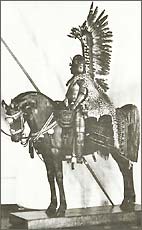
Fig. 14—Hussar armour and equipment of about 1640. (Polish Army Museum, Warsaw)
| |
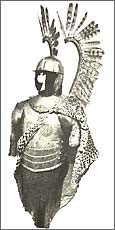
Fig. 15—Hussar winged armour from the late 17th century. (State Collection of Art at Wawel Castle, Cracow)
| |
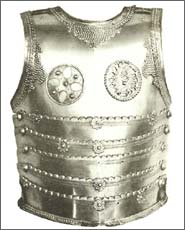
Fig. 16—Hussar breastplate, about 1640. (State Collection of Art at Wawel Castle, Cracow)
|
This armour in its entirety was very effective and
functional. Its weight rarely exceeded 15 kilograms (33 lbs.), the breastplates
were bulletproof, all the portions were well adapted to the body (in fact,
usually made to measure), and in fighting nothing hampered the wearer's
movement. In comparison with corresponding armours from the world's main
centers of production—Milan, Nuremberg, Augsburg and Greenwich—it was much
simpler, not to say crude, but nevertheless of considerable decorative merit: a
mixture of folklore and oriental motifs vigorously adapted and rendered by the
makers, most of whom were probably country blacksmiths. Brass was the principal
ornamental material, happily combined with brightly polished steel—a
combination with a long medieval tradition. The borders of the plates were
trimmed with brass, often embossed in small pearls; rivet heads were covered
with brass cut in squares or rosettes. Most characteristic were the emblems of
cast bronze or brass affixed to the breastplate, and sometimes to the gorget:
as a rule it was the "knight's cross", symbol of nobility, i.e. a
cross of four equal arms inscribed in a square or a circle; sometimes it was a
medallion with the image of the Immaculate Virgin standing on a crescent,
commemorating the first Polish Order under the patronage of the Virgin Mary
(proposed by the King but rejected by the Seym [Diet]—the great majority of
noblemen hated any distinction which could upset their equality. The Polish
Order of the White Eagle was finally founded in 1705 by King Augustus the
Strong, and its emblem cast in brass, a cross with the inscription Pro Fide Lege et
Rege, appeared sometimes on hussar breastplates).
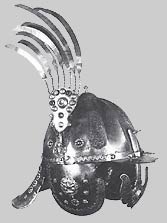
Fig. 17—Hussar zischägge of the early 18th century. (Polish Army Museum, Warsaw)
|
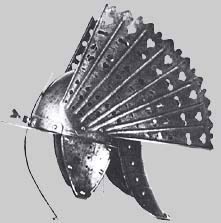
Fig. 18—Winged helmet of hussar style, early 18th century. (Polish Army Museum, Warsaw)
|
In the 18th century the armour style changed. Its forms
became rounded, but the edges of the lames became simple and straight, no
longer fretted or indented as before. Trimming with embossed brass went out of
use, but large brass masks were applied on the pauldrons, and on the
breastplates and gorgets the royal monograms or the knight's crest were displayed.
Plumes on the helmets, wings and wild animal skins were still very popular,
especially as 18th-century hussars became slowly but inexorably ever more a
purely ceremonial formation. Some suits of armour with single or double wings,
dating from the late 17th or early 18th century, have survived in Polish collections;
their battens are straight with the top curved at a contiguous angle, only the
armour at Wawel Castle having a pair of wings of S-form (Fig. 15). The wooden
battens were by then covered with velvet and mounted in brass, being fixed by
special rods into the holders of the backplates; some slight horizontal
movement is possible. No original skins from the 17th or 18th century are
extant but we know that they were lined, preferably with crimson silk, and were
furnished with precious metal clasps.
The armour here described and shown served exclusively for
the nobility that formed the elite of hussar squadrons. Each nobleman took
with him a group of horsemen who were under his direct command and fought close
to him in battle. They were mostly young peasants, well trained for war,
armoured in the hussar manner but in a much simpler way. These hussars of lower
rank often used the helmets called "Dutch pots," being a Western
version of the typical zischägge, and
their armour, without ornaments or knightly emblems, was usually blackened to
prevent rust.
The lance remained the most outstanding weapon of the
hussars. Some examples of them dating from the late 17th and 18th
centuries are preserved in Polish museums. Their average length runs to 5
meters (just over 16 feet); they are made of two halves of fir wood hollowed
out and glued together, only the wooden ball at the midpoint protecting the
hand. They are painted in motifs of golden feathers against a red background.
Their iron points are fairly small, about 10cm., ridge-shaped and furnished
with long metal battens for fixing to the shaft. Nine original hussar pennons

Fig. 19—Hussar saber of the early 18th century. (Polish Army Museum, Warsaw)
|
made of silk have survived in the Polish Army Museum in Warsaw. Two of them,
triangular and dating from the late 17th century, 390cm. long (about 12.5 feet)
and 71cm. wide at the shaft, (about 28 in.) are of two fields, one crimson and
one white, with a knight's cross incrusted; the other seven are slightly
longer, of a single crimson field with a knight's cross set between two crossed
sabers and two vipers. From iconographical sources we know that other colors
were also used: green-red, blue-green, black-white, yellow-white, and sometimes
checkered or zigzag motifs. On account of their partial hollowness, the lances
rarely exceeded 3 kilograms (about 6 lbs. 9 oz.) in weight and were easily
manageable, especially as the "tail" was placed into a special leather
tube tied on a thong to the saddle. When charging at a gallop a hussar could
pierce an armoured enemy, but the lance usually splintered. In the next stage
of fighting hussars used tucks, pallashes or sabers.
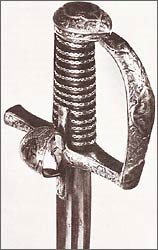
Fig. 20—Hussar saber hilt, late 17th century; note thumb ring. (National Museum, Cracow)
|
A special type of Polish hussar saber was constructed in the
second half of the 17th century (Figs. 19 and 20), eliminating the
Hungarian-Polish sabers which dominated up to that time7. The hussar
saber was indeed versatile, designed for direct, swinging, and arc-like cuts,
executed from the shoulder and elbow. The blade, between 82 and 87cm. long and
of the same width almost for its whole length, was double-edged towards the
point. Most blades were of Polish manufacture. But the true merit of the hussar
saber lay in the hilt, which had the quillons prolonged in a knuckle-guard and
a thumb-ring riveted to the inner languet, while the grip of wood was covered
with shark skin or leather and bound with iron or silver wire; the pommel was
almond-shaped. The most important feature of this hilt was the thumb-ring: the
pressure exerted by the thumb ensured a quick and efficacious cut. Hussar
sabers were sometimes called "black sabers" because of the grips and
scabbards clad in black leather. Heavy pallashes or tucks with long blades were
strapped, as usual, to the saddles. Hussars always held firearms in readiness.
At various times, though briefly, their lances were replaced by carbines, but
this rendered them essentially equals of mounted arquebusiers in the Western
style, and was not continued. Their officers went into battle without helmets
to show courage and to be recognizable all the time to their subordinates.
Their favorite weapon, besides the saber or the tuck, was the buz-dygan-mace, sometimes
with a dart, and the war-hammer. Along with the saddles and trappings of local
make, numerous imported or trophy saddles of oriental manufacture were used by
the hussars; Turkish, Persian, Tartar, and Circassian styles were appreciated.
These articles were also made in Poland, chiefly by the Armenians imitating
successfully Eastern patterns. Goldsmiths' work, embroidery, costly sorts of
leather and textiles were lavishly adopted. Horses in parade attire were
covered with sumptuous caparisons, while buntchuk-tails adorned
their necks.
In the long periods of peace in the 18th century Poland, the
hussar cavalry came more and more to serve as attendants of such ceremonies as
royal entrances, enthronements, weddings or funerals. They always aroused
enthusiasm and admiration echoed also by J. Kitowicz, an eminent writer of that
period: "It was something to watch when a hussar squadron passed in
parade! No monarch in the world had anything like this."
In recent times, Polish painters and novelists have rediscovered hussar legend,
tradition and history. In the awareness of the national heritage, the hussars
still live on.
About the Author
Dr. Zygulsk was the Curator of the National Museum in Cracow and Assistant Professor in the Cracow Fine Arts Academy. He is the author of many articles and monographs published in periodicals and in book form in several languages; among the most important of these are A History of the Czartoryski Collection and On Rembrandt's "Polish Rider."
References
1. S. Herbst, M. Walicki—Obraz bitwy pod Orsza. Dokument historii sztuki i wojskowosci XVI w./The "Battle of
Orsha" Painting: A Document of Art History and Military History of the 16 Century/; in Rozprawy Komisji Historii Kultury i Sztuki. Towarzystwo Naukowe Warszawskie, Vol. 1, 1949, p. 33-67. J. Bialostocki—Zagadke "Bitwy pod Orsza"/"The Battle of Orsha" Enigma/; in Biuletyn Historii Sztuki, Vol. 17, 1955, no. 1, p. 80-98.
2. Nicolas de Nicolay—Quatre premiers livres des navigations et peregrinations orientales, Lyon 1567.
3. Z. Zygulski Jr.—Rembrandt's "Lisowczyk": " A Study of Costume and Weapons; in Bulletin du Musée National de Varsovie, VI, 1965, no.2-3, p. 43-67.
4. K. E. Steneberg—Polonica. Kungl.Livrustkam-maren, Stockholm, 1943.
5. Claude Blair—European Armour, London 1958, p. 31-32.
6. B. Gembarzewski—Husarze, ubiór, oporzadzenie i uzbrojenie 1500-1775/Hussars' Dress, Equipment, and Armament 1500-1775/; in Bron i Barwa, Vol. V, Warszawa 1938, p. 207-254, Vol. VI, 1939, p. 51-70. Z. Bochenski—Ze studiów nad polska zbroja husarska/Studies on the Polish Hussar Armour/ ; in Rozprawy i Sprawozdania Muzeum Narodowego w Krakowie, Vol. VI, Krakow 1960.
Z. Bochenski—Próba okreslenia genezy polskiej zbroi husarskiej/Essay on theOrigin of the Polish Hussar Armour/; in Muzealnictwo Wojskowe, Vol. 2, Warszawa 1964, p. 141-166.
7. W. Zablocki—Funkcjonalno-konstrukcyjna charak-terystyka rekojesci dwoch typow polskich szabel bojowych z wieku XVII/Construction and Function of Two Polish War Saber Hilts of the 17th Century/; in Studia do dziejów dawnego uzbrojenia i ubioru wojskowego, V, Krakow 1971, p. 57-95.
|
|

